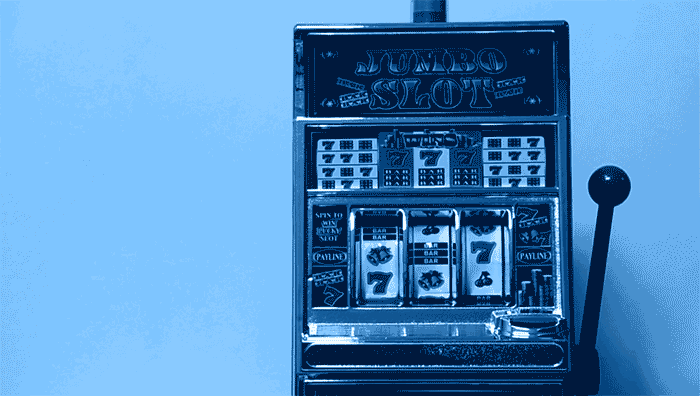WALTER ISAACSON: The room is at first glance overwhelming and eye-wateringly bright, ear-splittingly loud, sensory overload. There’s no sunlight to be found because there aren’t any windows. Look down and your eyes are assaulted by carpeting so garish that surely nobody could have designed it that way on purpose. What’s that smell in the air? It’s cloying, but strangely pleasant at the same time. Where are we? On a casino floor. Maybe in Las Vegas, maybe in Macau, maybe on a native reserve in Connecticut. It doesn’t matter because the principles are the same. The chaos around us is entirely by design. From the ugly carpeting to the calming sense spritzed into the air, to the impossible-to-navigate layout, every element is there for a reason. It’s there to keep us distracted, to keep us playing, and to make us forget about the outside world. Because the longer we stay on the floor, the more of our money the casino gets. The house always wins.
In every direction on that casino floor are the machines. Casinos may employ a lot of sophisticated methods to get your attention, but the most ingenious may seem, at first glance, the most innocuous. First thing with colorful LED screens screaming with synthesized melodies, the slot machines take up every available square inch. And there’s a reason why the slots hog so much valuable floor real estate. From their humble beginnings as coin-operated one-arm bandits, slots have evolved into technological powerhouses of unsurpassed ingenuity and profitability. And as gambling increasingly moves online, they’re moving from the casino floors and onto your phones.
I’m Walter Isaacson, and you’re listening to Trailblazers, an original podcast from Dell Technologies.
[VIDEO PLAYBACK]
MAN 1: Gambling is America’s number one moneymaking business.
MAN 2: Gamblers, yes, indeed. Sucker gamblers.
MAN 3: Gaming may be found in the flush legalized gambling casinos of Las Vegas.
MAN 1: We all like to take a chance or gamble occasionally.
MAN 3: This half-drunk sucker looks ripe for picking.
[END PLAYBACK]
WALTER ISAACSON: Ever since we could make dice-like objects out of animal bones and roll them, humanity has loved to wager. Crude gambling artifacts have been found in archaeological digs dating back thousands of years. The idea of the lottery dates back to Song Dynasty era China in the 10th century. The very first Casino, the Ridotto, was opened in the 1600s in gambling-crazed Venice.
And as the pace of technology has quickened, so have the innovations in the way we bat. The last few decades have seen a quantum leap forward in gambling technology. Using insights gleaned from big data neuroscience and the video game industry, casinos now know more about their customers than ever before, and how to use those insights to maximize their profit margins. Leading the way in that technological revolution, are the devices many would consider the most old-fashioned of them all, those one-armed bandits themselves, slot machines.
When a Bavarian immigrant named Charles Fey sat down to tinker in his little workshop in San Francisco’s Market Street in 1895, he had no way of knowing he was about to invent a machine that would revolutionize gambling. It’s something that still, over 120 years later, remains one of the industry’s most important and lucrative pieces of technology.
San Francisco was booming in the late 19th century and everywhere Fey looked, poker was all the rage. Crude gaming machines themed after the popular card game offered up prizes in exchange for a winning hand. Inspired by these, Fey and his business partners devised something entirely new, a machine they called the Liberty Bell.
DR. DAVID SCHWARTZ: Slot machines, when they were originally invented in San Francisco by three immigrant German mechanics were basic mechanical devices.
WALTER ISAACSON: Doctor David Schwartz is the director of the Center for Gaming Research at the University of Nevada, and the author of “Roll the Bones: The History of Gambling.”
DR. DAVID SCHWARTZ: You would put a coin in, you would pull a lever or pull a handle to spin the reels. You would spin the reels, and if they lined up you would win a couple coins. And the jackpots are very small. And the entertainment value is pretty limited.
WALTER ISAACSON: But despite its simplicity, The Liberty Bell set off a craze. Soon Fey’s own device and many copycats flooded San Francisco and other major cities. The pattern became familiar. Slots would show up in the town. People would spend thousands of dollars on them. And disapproving city leaders would ban them. In the 1930s New York Mayor Fiorello La Guardia had a particular hatred for these devices and led a forceful crusade against them.
MAN 4: Gotham’s colorful Mayor La Guardia led police in smashing and jettisoning 1,200 slot machines.
WALTER ISAACSON: It took the rise of a sleepy desert town in Nevada to really accelerate the development of slot machines into the high tech moneymaker that can be found on casino floors today. Americans had always loved to gamble, whether it was playing poker games in smoky saloons or rounds of faro on Mississippi riverboats. Most people didn’t even seem to mind that it wasn’t always strictly legal.
But when enterprising businessmen started opening resorts in the state of Nevada, where gambling had been legal for decades, tourists flocked to the lavish new destination. With the opening of casinos like the Flamingo in the post World War II years, Las Vegas was officially open for business. But at first, slots were not much more than a slideshow. Dr. David Schwartz.
DR. DAVID SCHWARTZ: Originally casinos in Las Vegas and on the Las Vegas strip were pretty much focused on table games and pretty much focused on the game of craps.
WALTER ISAACSON: That started to change, though, as the science behind the machines started to advance in lockstep with transistor and computer technology. 1964 introduced the world’s first electromechanical slot, the Money Honey. Whereas older machines were limited to pay out of a few dozen coins, the Money Honey’s electric copper allowed for a huge payout of hundreds of coins at a time, making every successful spin a spectacle.
A decade later an inventor named Walt Fraley introduced the first slot machine with a video screen, which sounded the death knell for the old mechanical machines, even though the real imagery hasn’t totally gone away. Their signature cherries and other assorted fruits are still present on machines today, but mainly in video form.
And a few years later, a slots entrepreneur William “Si” Redd brought two new innovations onto the casino floors. The first was video poker, and the second was something called progressive slot machines, a response to the then-new California Lottery and its promise of massive prizes.
DR. DAVID SCHWARTZ: The other big innovation in the ’80s was the wide-area progressive. And this is a game like Mega Bucks where you have coins from slot machines all over a jurisdiction are contributing to a central jackpot, which can grow into multi millions.
WALTER ISAACSON: Redd’s innovation was to have thousands of machines linked together into a single network, with players competing for lottery-sized jackpots. This added a whole new layer of possibility to anyone spinning the now-virtual reels. And the largest ever win in 2003 was just shy of $40 million. That’s a whole lot of coins.
The computerization of devices that came with Walt Fraley and Si Redd’s innovations paved the way for more sophisticated gambling machines.
NATASHA SCHULL: The gambling industry gained enormous mathematical flexibility with the introduction of the computer chip.
WALTER ISAACSON: Natasha Schull is the author of “Addiction by Design: Machine Gambling in Las Vegas.”
NATASHA SCHULL: If you walk into any casino today, and you haven’t been there, and you’ve got a one-armed bandit in your mind as the kind of iconic three-reel slot machine, you are going to be hard pressed to find such a thing on the casino floor. What you’re going to encounter instead are these screens that are jam packed with symbols. And when people play them, it’s not just line up a row of symbols across. It could be zigzag, or scatter, and you can bet on 200 lines per spin.
WALTER ISAACSON: Once considered a harmless distraction from the real action of the table games and sports betting, slots began to account for more and more of the casino’s profits.
NATASHA SCHULL: Machines that were not bringing in most of the revenue suddenly were the golden geese. And you saw slot machines moving into prime real estate in casinos. A lot of interesting things happened. Slot machines didn’t even used to have stools in front of them because you were supposed to just sort of play a few bucks on your way to the real gambling. But what I saw was introduction of ergonomic seats to really keep you there playing longer.
WALTER ISAACSON: Some recent estimates have slots accounting for around 80% of casino revenue. And even the way they look is a far cry from the one armed-bandits of old.
DR. TIMOTHY FONG: The evolution of slot machines is a snapshot of American culture.
WALTER ISAACSON: Dr. Timothy Fong is an associate professor of psychiatry at UCLA and co-director of the UCLA gambling program.
DR. TIMOTHY FONG: When you walk through any casino in America that has slot machines and, again, you’ll see things like favorite television shows, and media, and personalities branded in with slot machine.
WALTER ISAACSON: There are slot machines themed after Game of Thrones, Dolly Parton, and Judge Judy. Even the hit movie The Hangover has it’s own themed machine. And all that familiar branding is there by design. It’s meant to get your attention and get you to sit down. There’s something for everyone. With so many varieties, there’s guaranteed to be one to catch your eye.
The modern-day slot machine has taken its cues from the video game industry and has become a far more immersive experience. David Schwartz.
DR. DAVID SCHWARTZ: It really has been a little bit of an arms race in slot machine design, where originally they were pretty basic, and they just– you know, the wheels turn, they beep, they flash lights. In recent years, they’ve become much more immersive where they’ll have surround sound speakers, they’ll have chairs that vibrate. They’ll have themes from a lot of popular shows and movies. So they’ve really tried to become more eye-catching and more immersive to players.
WALTER ISAACSON: Beyond just the branding now, the more money they’ve brought in, the more sophisticated they’ve become as manufacturers refine their designs to make them ever more captivating and efficient. The goal is simple, to keep customers playing and to keep taking their money.
KEITH WHITE: Almost every feature of the modern slot machine has been tweaked and designed in order to maximize revenue.
WALTER ISAACSON: Keith White is the executive director of the National Council on Problem Gambling.
KEITH WHITE: When you look at the structural characteristics of gambling, you look at things like speed of play, bet size, frequency of play, and jackpot size. And so those are four major sort of criteria, if you will, that can be manipulated by the slot manufacturer or the operator. So you can have a machine that plays very frequently. You can have a machine that has really large jackpots. Or you can have a machine that’s set to reward lots of small winnings, but rarely a big jackpot, and so on and so forth. Each of those four has salience in terms of both profit or revenue, or time on device for the machine, as well as for addiction.
WALTER ISAACSON: Modern day slot machines are designed to be incredibly captivating. For some players sitting down at one means that time seems to melt away and hours can fly by. To understand how that process works, it’s necessary to look at a neurochemical in our brains called dopamine. The way slot machines are designed may, intentionally or not, stimulate that chemical. Dr. Timothy Fong.
DR. TIMOTHY FONG: Men and women with gambling disorder respond differently to gambling cues. So for instance, when they see a casino or they see a slot machine, there are different parts of their brain that are hyperactive, and there are other parts of the brain that are hypoactive. So some parts are working too hard. Some parts aren’t working enough.
So classically, we think of dopamine, one of our major neurochemicals that’s responsible for pleasure, reward, learning, reinforcement– a whole host of human behaviors. What we do know that in the brains of gambling disorder patients is that dopamine in and of itself is altered. Some parts of the brain it appears to be too active, meaning too much dopamine. Other parts of the brain, it’s too low, not enough dopamine. And other parts of the brain, the receptor that carries dopamine is also ineffective or doesn’t work as well.
WALTER ISAACSON: Many researchers now believe that players of slot machines are less interested in the financial payout that comes with a big jackpot than with the feeling they get, the feeling of being suspended in a state of dopamine-fueled neurochemical bliss.
Mary Sojourner is a commentator for NPR and the author of the memoir, “She Bets Her Life: A True Story of Gambling Addiction.” In it, she describes the seductive allure of the slot machine which she compares to a powerful drug.
MARY SOJOURNER: We’re not playing to win money. We’re playing to get in the zone and to stay in the zone. And professionals in the industry talk about ToD, which is Time on Device. And most gambling addicts are playing for ToD, to get to stay on the device. That’s why we’ll often play until our last dollar’s gone.
I can remember a time when I’d had a hiking fall. And I had temporary arthritis kick in all over my whole body. And it was pretty much agonizing. And a friend managed to get me to a casino. And I sat down at my favorite machine, and the whole time I was playing the pain was gone. All pain was gone.
WALTER ISAACSON: Of course, not every player who sits down at the slots becomes addicted. Far from it. But they are incredibly sophisticated devices capable of taking your money at a startling speed. But slots have a second important use for casinos. They don’t just generate revenue, they also generate an enormous amount of very valuable information.
When the once storied Caesars Entertainment filed for bankruptcy protection in 2015, Caesar’s most valuable asset was its data. Over two decades, the company’s Total Rewards program had gathered invaluable intel on millions of its visitors. That information alone was estimated to be worth upwards of $1 billion. And a legal battle broke out over just who was entitled to it.
But where did all that information come from? And what did the company put it to use for? To understand that, we have to go back a few decades with the birth of what are now commonly known as players clubs. Doctor David Schwartz.
DR. DAVID SCHWARTZ: Players clubs developed in the ’70s and ’80s. It started as a way for casinos to reward slot players. The principle behind it is, you put your card in the slot machine. It records what you play. And then they will give you a percentage of what they believe you will lose back as comps. This helps the player if they are already gambling because then they’re getting some free stuff. And it helps the casino, more importantly, because they know how much people are playing, and they can try to incentivize them to gamble more. So that’s really the evolution of players cards right there.
WALTER ISAACSON: It started out pretty simple. Like any business, casinos wanted players to come back. And comping or rewarding high rollers with hotel rooms, free meals, and tickets to shows was one way to retain them. With members swiping their cards every time they sat down at a slot machine, casinos soon came to realize they were sitting on a goldmine of data on how, when, and where their customers gambled.
Unlike other loyalty programs offered by companies such as airlines, players clubs offered a veritable fire hose of information that the casinos can use to their advantage. Natasha Schull.
NATASHA SCHULL: If you think about it, you’re not taking 1,200 flights per hour. But you are playing 1,200 hands an hour on some of these machines. And so the granularity, the depth of the data that’s being collected on you, it’s really quite robust. And they know a lot about you. And they can sync up your habits at the machine with your demographic profile, with your history, and sort of hone a better and better profile to match you over time. And then use that in different ways to incentivize you to keep playing.
WALTER ISAACSON: With players club cards, the casinos are always watching you. And that data was an asset they could use to their great advantage. Analyzing their customers’ patterns led casinos to completely change the way they interacted with them.
DAVID NORTON: We saw if on your first trip, you played unlucky, you came back at half the rate for that second trip.
WALTER ISAACSON: David Norton is a former chief marketing officer of Caesars Entertainment, and the author of “The High Roller Experience: How Caesar’s and Other World Class Companies are Using Data to Create an Unforgettable Customer Experience.” It was under his guidance that Total Rewards became a big data powerhouse.
DAVID NORTON: You didn’t decide to be a gambler today. You decided to try us out because we had a concert you liked. Or maybe you had not a great experience at your home casino. But the fact that analytically we could show, if you had a negative losing experience, meaning you expect your $100 to go an hour and you lost in 10 minutes, that’s not a great experience. That’s unlucky. We saw those people who have that kind of experience return at half the rate.
So what we did was, we sent out an employee– originally, before mobile technology was in place, and said, hey, welcome to the casino. Here’s what Total Rewards is all about. Here is a coupon to the buffet. And we’re trying to elevate their feeling of luck that, hey, I didn’t play lucky here. But they like me, and there’s good service. And we saw that both they played more that day and they came back at a higher rate.
WALTER ISAACSON: For some, that highly granular personalized attention, while good for the casino’s bottom line, is a cause for concern. Keith White.
KEITH WHITE: Gamblers will often receive offers that are tailored or designed to their specific playing behavior. So I am, for example, might get an offer that says I’ll get free tickets to a show if it’s been seen that I like to go to the show. So it’s a very interesting question, because you have, of course, the gambling data, which is powerful and predictive in and of itself. And when that gets married to other external data on your consumer behavior, that can create a very powerful predictive model that can then be used to drive gambling participation. And again, there’s a lot of potential for abuse. It’s not at all clear that gambling regulatory agencies are interested, or even have jurisdiction over the way a gaming company collects and uses player data or other data to help drive their business.
WALTER ISAACSON: Casinos may be collecting and deploying an enormous amount of data, but there’s one area of gambling that has them beat when it comes to tracking players and influencing their behavior. In the mid-’90s, the government legalized internet gambling and players have been moving online ever since. David Schwartz.
DR. DAVID SCHWARTZ: Online gambling goes back about 20 years now, and pretty much it’s like the telegraph. Where as soon as people invented a way to communicate, people figured out how to gamble on it. In this case, sports betting was the first big area. And that’s pretty good because as long as you know the person is going to pay out if you win, you know they’re not controlling the contest itself.
WALTER ISAACSON: The rise of mobile phones and apps have led to a phenomenon that looks like gambling, sounds like gambling, and yet exists in a legal gray area where it’s not technically considered gambling. Games that look and feel like slot machines, though they can’t cash out real money, can be found all over the App Store and on sites like Facebook. A wildly popular phenomenon that Keith White calls social casino.
KEITH WHITE: Traditionally, gambling in America has been defined as you have to meet a three-pronged test for an activity to be considered gambling. So the activity has to have prize. It has to have chance. And it has to have consideration, or something you pay to play. And so some very clever people started to look at that definition and realized that in an online environment, or now in your mobile phone, what if you took away chance? Would it still be a slot machine, and thus would it still be gambling? And while no court has really tested this, Americans last year lost about $2.5 billion on social casino games that are free to play.
And you might ask yourself, why would someone pay $2.5 billion to play a game, a slot game, that is free and that probably doesn’t reward you any coins. And this gets a lot into both the psychology of gambling and the impact of technology on gambling behavior.
WALTER ISAACSON: Not legally classed as gambling, social casino games are free from regulatory oversight. Operators used the enormous data that they have on their players to entice them to keep playing. One way is through highly targeted promotions.
KEITH WHITE: Some of the promotions within the social casino space are absolutely the most aggressive things I’ve ever seen. Emails saying, if you just play for three hours straight, you’re going to get another bonus. If you play at least once a day for seven days, you’re going get a bonus. We’re going to give you 250,000 free coins. I mean, I’ve seen stuff down to the minute. Play 30 minutes between 11 o’clock and 12 o’clock today, and you’re going to get a 5,000 credit bonus. It’s absolutely incredibly aggressive.
WALTER ISAACSON: Even more than that, social casino operators are free to tamper with the game itself in order to encourage continuous play. While the outcomes of real money gambling devices like slot machines are often strictly regulated by organizations like the Nevada Gaming Control Board, there’s no such oversight in the social casino space. This has led to a phenomenon known as reflexive or adaptive gaming, where a game outcomes evolve to accommodate the user and to keep them playing. Mary Sojourner describes the experience of playing a Facebook-based slots game.
MARY SOJOURNER: The algorithms will measure. If I get a big hit, they’ll lay back for a while. If I’ve gone along getting little piddly hits for a while, then they’ll hit me with either a good hit or one of those bonuses, one of the free plays. And they’re under no control from gambling commissions. So that means when somebody is playing Facebook slots, they’re being played.
WALTER ISAACSON: And as gambling becomes easier and easier to do without ever getting near the Las Vegas strip, the associated problems will continue to rise. Dr. Timothy Fong.
DR. TIMOTHY FONG: Unfortunately, we’ve seen some patients who have come in who’ve never set foot inside of brick and mortar casino, and yet have spent hundreds of thousands of dollars on gambling behavior. And so technology, therefore, has to be, in my mind, monitored and regulated in a way that’s thoughtful and appropriate. And it’s an incredibly difficult thing to police and regulate.
WALTER ISAACSON: But even as we become more aware of the problems associated with a confluence of gambling and technology, it’s not likely to slow down anytime soon. The industry is said to contribute $100 billion a year to the American economy, a figure that’s only going to go up.
Will slot machines keep on spinning? With billions of dollars at stake, you can bet on it.
I’m Walter Isaacson, and you’ve been listening to Trailblazers, an original podcast from Dell Technologies. The next episode of Trailblazers is all about the world of robotics. It was recorded live at the South by Southwest Festival, and includes some of the most fascinating innovators in robotics today. That episode will be out in two weeks. Until then, thanks for listening.
[MUSIC PLAYING]
 From bone-rolling to bone-rattling thrills.
From bone-rolling to bone-rattling thrills. The one-armed bandit of the wild, wild west.
The one-armed bandit of the wild, wild west. Off shore. Online. Omnipresent.
Off shore. Online. Omnipresent. David Schwartz
Is the Director at the Center for Gaming Research at the University of Nevada, Las Vegas and the author of Roll the Bones: The History of Gambling.
David Schwartz
Is the Director at the Center for Gaming Research at the University of Nevada, Las Vegas and the author of Roll the Bones: The History of Gambling.
 Mary Sojourner
Is a former NPR commentator and author of She Bets Her Life: A True Story of Gambling Addiction.
Mary Sojourner
Is a former NPR commentator and author of She Bets Her Life: A True Story of Gambling Addiction.
 David Norton
Is the author of The High Roller Experience: How Caesars and Other World-Class Companies Are Using Data to Create an Unforgettable Customer Experience.
David Norton
Is the author of The High Roller Experience: How Caesars and Other World-Class Companies Are Using Data to Create an Unforgettable Customer Experience.
 Dr. Timothy Fong
Is Associate Professor of Psychiatry at UCLA and Co-Director of the UCLA Gambling Program.
Dr. Timothy Fong
Is Associate Professor of Psychiatry at UCLA and Co-Director of the UCLA Gambling Program.
 Natasha Schüll
Is a cultural anthropologist and associate professor at New York University. She’s the author of Addiction by Design: Machine Gambling in Las Vegas.
Natasha Schüll
Is a cultural anthropologist and associate professor at New York University. She’s the author of Addiction by Design: Machine Gambling in Las Vegas.
 Keith Whyte
Is the Executive Director of the National Council on Problem Gambling.
Keith Whyte
Is the Executive Director of the National Council on Problem Gambling.